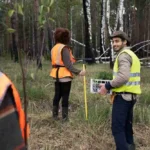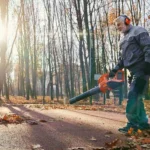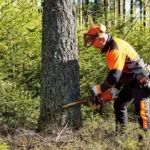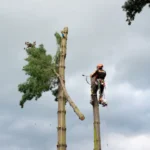
Denver Tree Troubles? 5 Signs It’s Time for Professional Tree Removal
Have you been eyeing that one tree in your yard, wondering if it’s time to take it down? Whether it’s a once-lush oak succumbing to disease or a seemingly harmless lean on a spruce after a storm, troubled trees in Denver can pose risks to your property and safety.
This blog will walk you through 5 clear signs that signal it’s time to call in the professionals for tree removal. Plus, we’ll share how Creative Tree & Stump can help protect your home and your peace of mind.
The Tree Is Dead or Dying
Sometimes, even with the best care, trees don’t make it. A dead or dying tree can become extremely brittle and unpredictable, making it hazardous to keep standing.
How to tell if your tree is declining:
- Bare branches in the growing season while other trees are lush.
- Fungal growth (like mushrooms) at the base, which suggests rot.
- Bark that’s peeling or falling off in large patches.
If you’re noticing multiple signs of decline, it’s time to address the issue before heavy winds or snow make the situation worse.
Storm Damage Has Left It Unstable
Denver is no stranger to harsh weather conditions. Sudden storms, high winds, or heavy snow can wreak havoc on your landscape, and trees often bear the brunt of the damage.
Look out for these symptoms after a storm hits:
- Large, cracked branches hang precariously.
- Splits in the trunk that compromise structural integrity.
- Trees leaning more than usual or uprooted partially.
These issues often require emergency tree services, especially if there’s a risk of additional falling debris.
It’s Leaning More Than It Should
A tree naturally grows upright toward the sun. While some trees may develop a slight lean over time, an excessive or sudden tilt is a red flag.
What’s excessive?
- A lean of 15 degrees or more indicates internal structural issues or unstable roots.
- Noticeable shifts in the soil around the tree base suggest weakening roots.
Leaning trees are especially prone to falling and should be assessed (and likely removed) immediately by a professional.
Roots Are Damaging Your Property
Although roots are mostly out of sight, their impact can often be felt where it matters most—in your yard, driveway, or even your foundation.
Common signs of root-related damage include:
- Cracks in sidewalks or paved areas.
- Uplift in the soil near the tree’s base.
- Visible invasion into utility lines or drainage systems.
Tree roots are powerful and can spread extensively, pushing against surfaces and structures around them. If left unchecked, this can result in costly repairs.
It’s Too Close to Structures or Utility Lines
One of the most critical reasons for tree removal is proximity to homes, garages, fences, or power lines. When trees grow too close, they often become unintentional hazards.
Here’s why this can be problematic:
- Branches overhanging roofs can break off and cause property damage.
- Trees too close to walls or windows may sway and scrape during high winds.
- Overgrown trees near utility lines can cause outages or ignite electrical fires.
If you’re dealing with any of the above scenarios, it might be time to prioritize tree removal for safety and compliance.
Got Questions? We’ve Got Answers
How do I know if I need emergency tree removal in Denver?
It’s important to act quickly if you notice:
- Trees leaning significantly or showing signs of upheaval.
- Broken branches or a cracked trunk after storms.
- Dead branches hanging directly above your home or driveway.
Visit our “Emergency Tree Service in Denver” page for more details or call our 24/7 team for immediate help.
Call Creative Tree and Stump Today
Unsure if your tree is a risk? Please don’t wait for that question to answer itself in the form of a property-damaging disaster. Our experienced arborists at Creative Tree & Stump are here to provide trusted advice, fast service, and safe tree removals in Denver and surrounding areas.
Chat with one of our professionals today and get a free estimate on any tree removal project. Call us at (970) 580-6932 or visit our estimate page.







